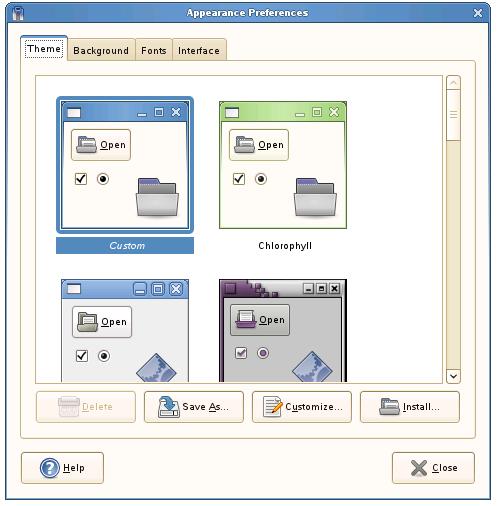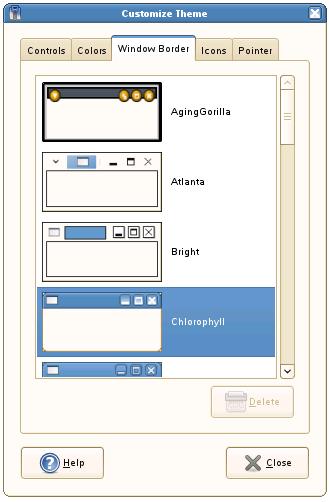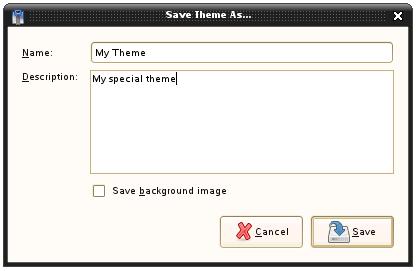Installing and Customizing openSUSE Desktop Themes
| Previous | Table of Contents | Next |
| Changing the openSUSE GNOME Desktop Background | Configuring openSUSE Desktop Fonts |
One of the key advantages of Linux desktops in general is the fact that they can be customized to meet any particular preferences. The openSUSE implementation of the GNOME desktop environment is no exception to this rule. In this chapter of openSUSE Desktop Essentials we will look at changing the theme used by the desktop.
What is a Desktop Theme?
The theme of a desktop defines how various aspects of the desktop appear. Each theme contains a number of categories which define how different aspects of the desktop appear:
- Controls - Defines how items such as pushbuttons, toggles and sliders appear.
- Colors - Specifies the color scheme of windows, input boxes, selected items and tooltips. A different color is specified for each item.
- Window Border - The design style of the border surrounding each window on the desktop.
- Icons -Defines the design of icons which appear on the desktop (for example Folder, Trash and Computer icons).
- Pointer - Defines the size and style of the mouse pointer icon.
A number of different themes are installed by default with openSUSE. In addition, a wide range of other themes are available for download. In addition, a theme may be further customized if you do not like a certain aspect of a particular theme.
Note that themes are not considered to be a system-wide setting. This means that changes made to the current theme affect only the currently logged in user. Other users will still see their preferred theme when they log in.
Changing the openSUSE Desktop Theme
Theme settings are configured from the Appearance Preferences screen accessed from the Computer->Control Center->Appearance option. When the screen appears make sure the Themes tab is selected so that the dialog appears as follows:
Downloading and Installing a Theme
Although openSUSE is installed with several different theme options, in reality this represents just a small subset of themes that are available online. A wide range of themes are available for download from http://art.gnome.org/themes.
The themes are downloadable by theme sub-category (i.e Window Border, Icons etc). Let's start by installing a new Window Border theme. On the right hand side of the GNOME Art website click on the Window Border link beneath Desktop Themes. This will filter the list of themes so that only Window Border themes are displayed. Scroll down the list and click on a theme that is not currently available on your openSUSE installation (for this example we will use the MetaGrip theme).
The new theme can be installed one of two ways. Either click and drag the theme package from the desktop to the Appearance Preferences dialog to add the theme, or click on the Install... button in Appearance Preferences and navigate to the location where the theme is installed.
Once the theme has been added you will be asked if you wish to apply the new theme to the current desktop:
If you choose to apply the new border theme it will immediately take effect on the desktop. For the purpose of this tutorial, however, we will opt to apply the theme later by creating a custom openSUSE desktop theme.
Creating a Custom Theme Package
Any theme may now be used to either customize an existing theme, or to create a new desktop theme.
In this example we will create a custom theme which includes our new Window Border design. Click on the Custom theme in the Appearance and on the Customize... button. In the resulting Customize Theme dialog select the Window Border tab so that the list of available window border themes appears:
Scroll up and down the list of themes until you find the new theme (in this case the MetaGrip theme). Select the theme and watch the desktop window borders change instantly to this new style. Spend some time changing some of the other theme settings such as text colors and icon and pointer styles. When you have a new theme that you are happy with simply close the Customize Theme window.
Assuming this is a theme you would like to use again the next step is to give the theme a name and save it. To achieve this make sure the Custom theme is selected and click on Save As.... The Save Theme As dialog will now appear. Provide a name for your theme and add comments if desired. You can also optionally include the current desktop background in the theme package:
Once the theme is saved it will appear in the list of available theme packages along with the standard openSUSE themes.
Summary
In this chapter we have looked in detail at selecting, installing and customizing openSUSE desktop themes. In the next chapter we will look at Configuring openSUSE Desktop Fonts
| Previous | Table of Contents | Next |
| Changing the openSUSE GNOME Desktop Background | Configuring openSUSE Desktop Fonts |



